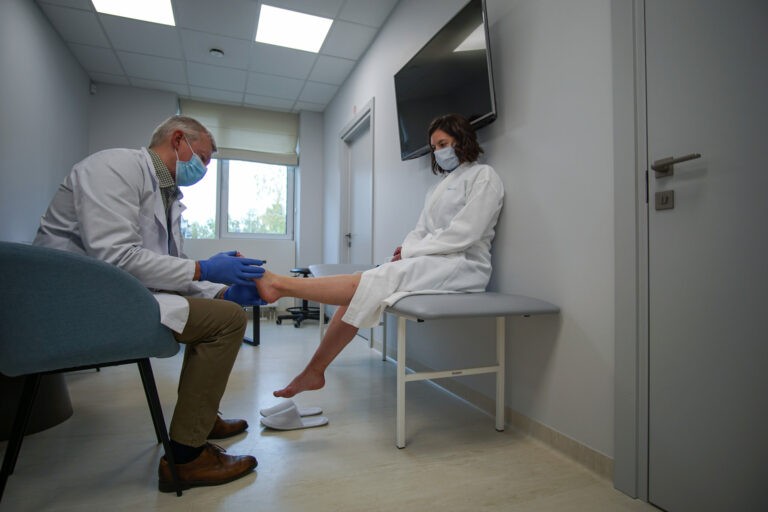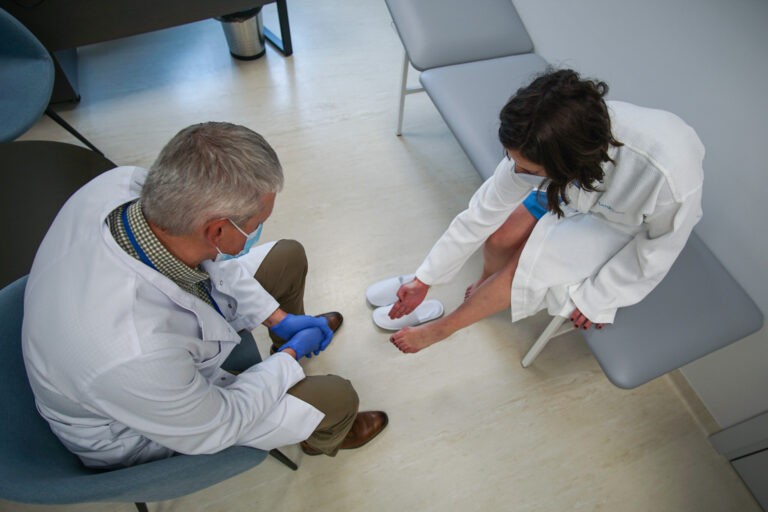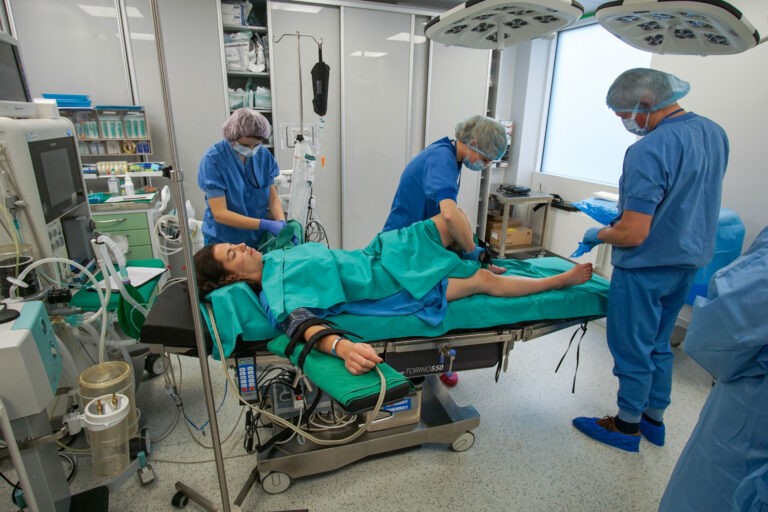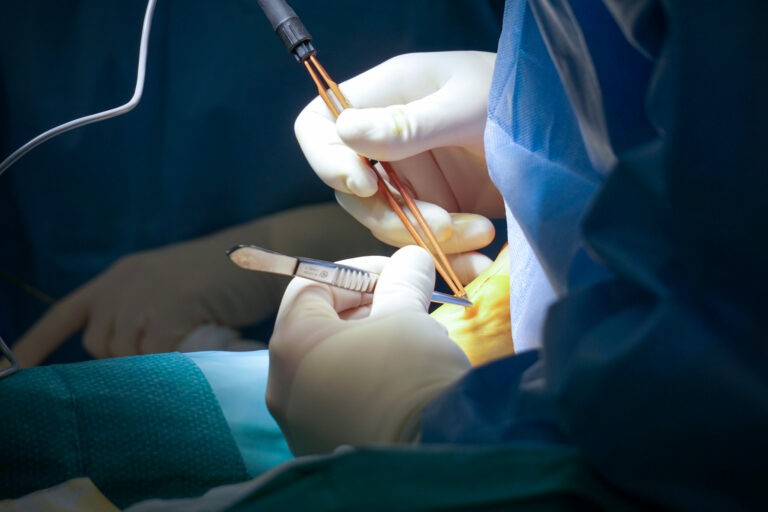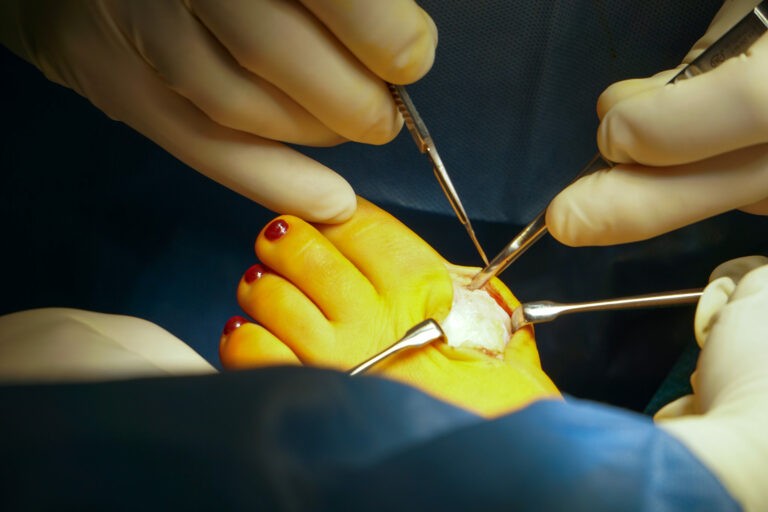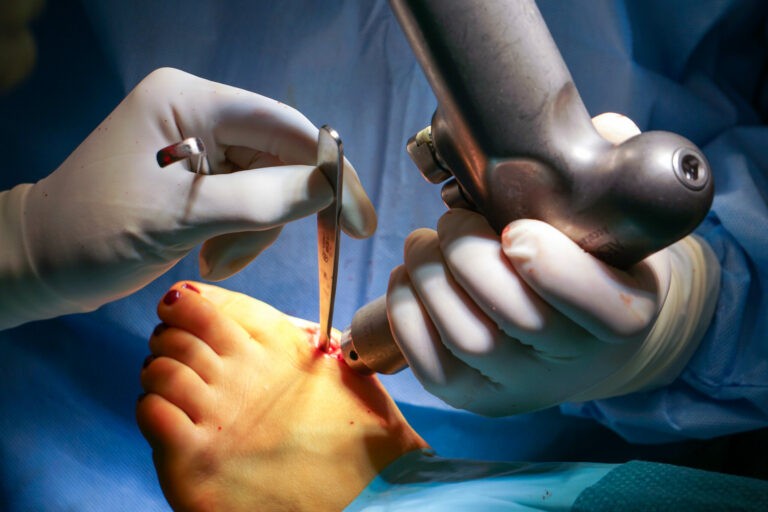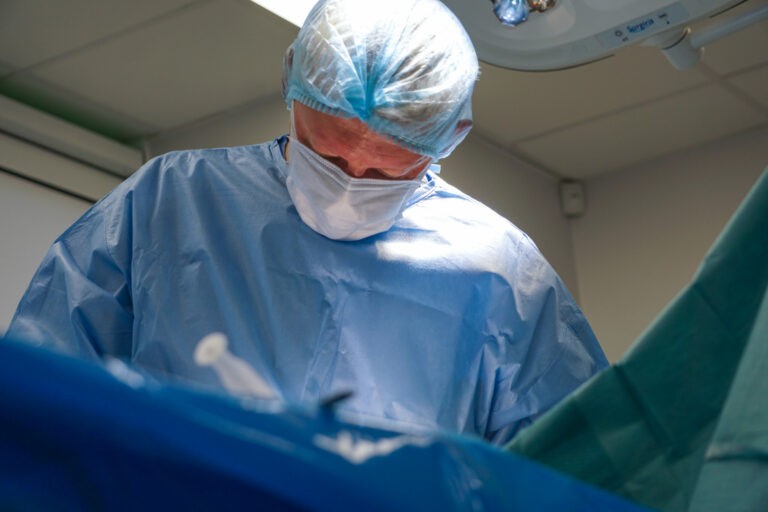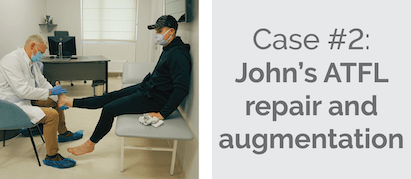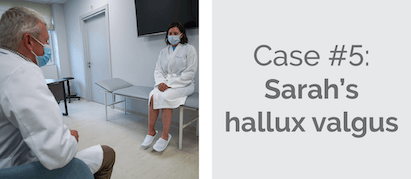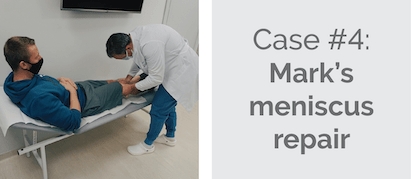Sarah's diagnosis
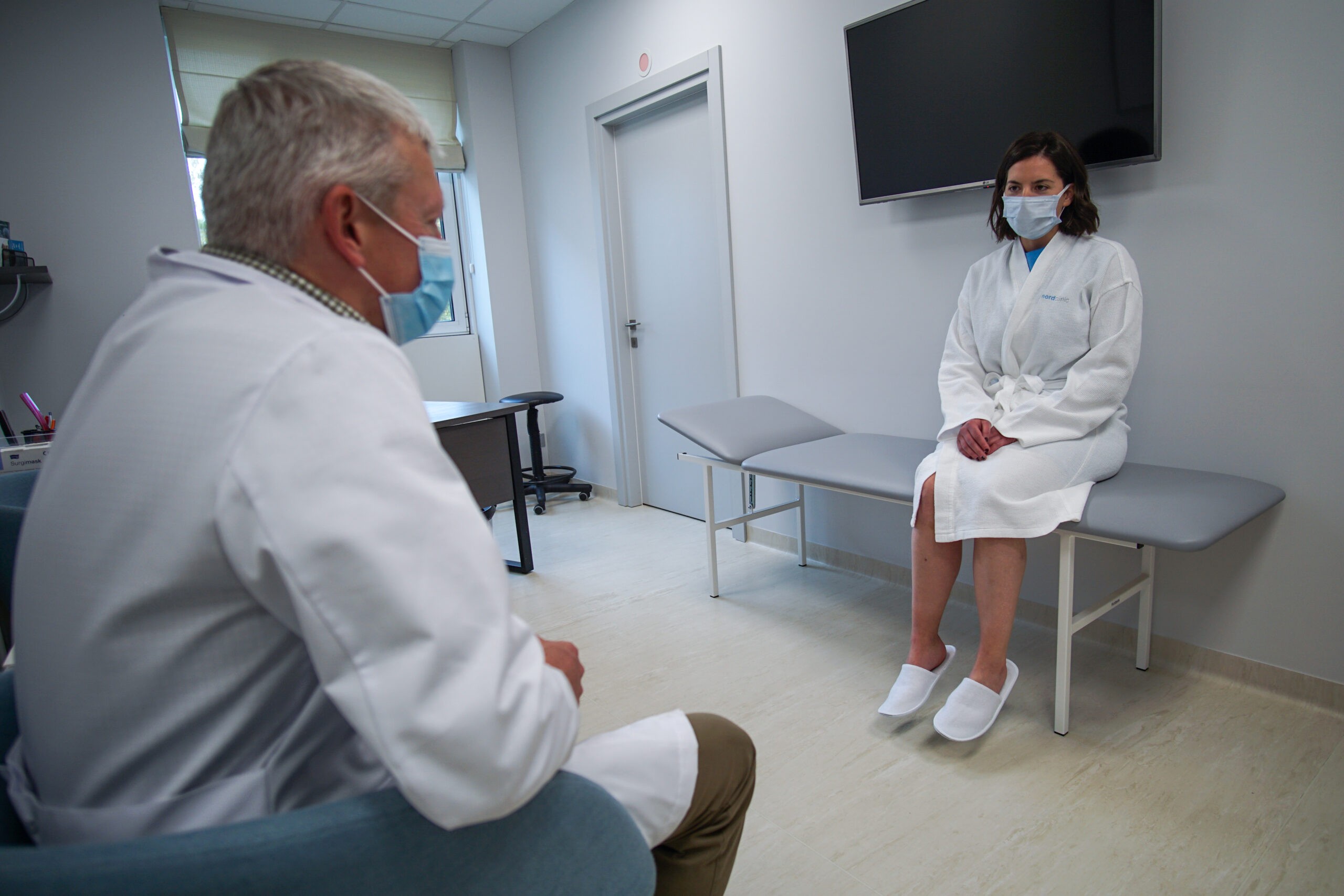
Sarah was diagnosed with a bunion – also known as hallux valgus in both legs. When the big toe starts pointing inwards, it causes the bones of the foot to realign in a new position. The soft tissue and the bones then form a prominence on the medial, or inner side of the foot. It takes a while for the bones and soft tissue to relocate, and thus, form a bunion. During this process, the foot widens, causing difficulty to adjust the footwear due to rubbing and pressing, recurrent inflammation in the toe joint area and scabs formation. As conservative treatment was not effective, surgery was suggested.
Performing the surgery
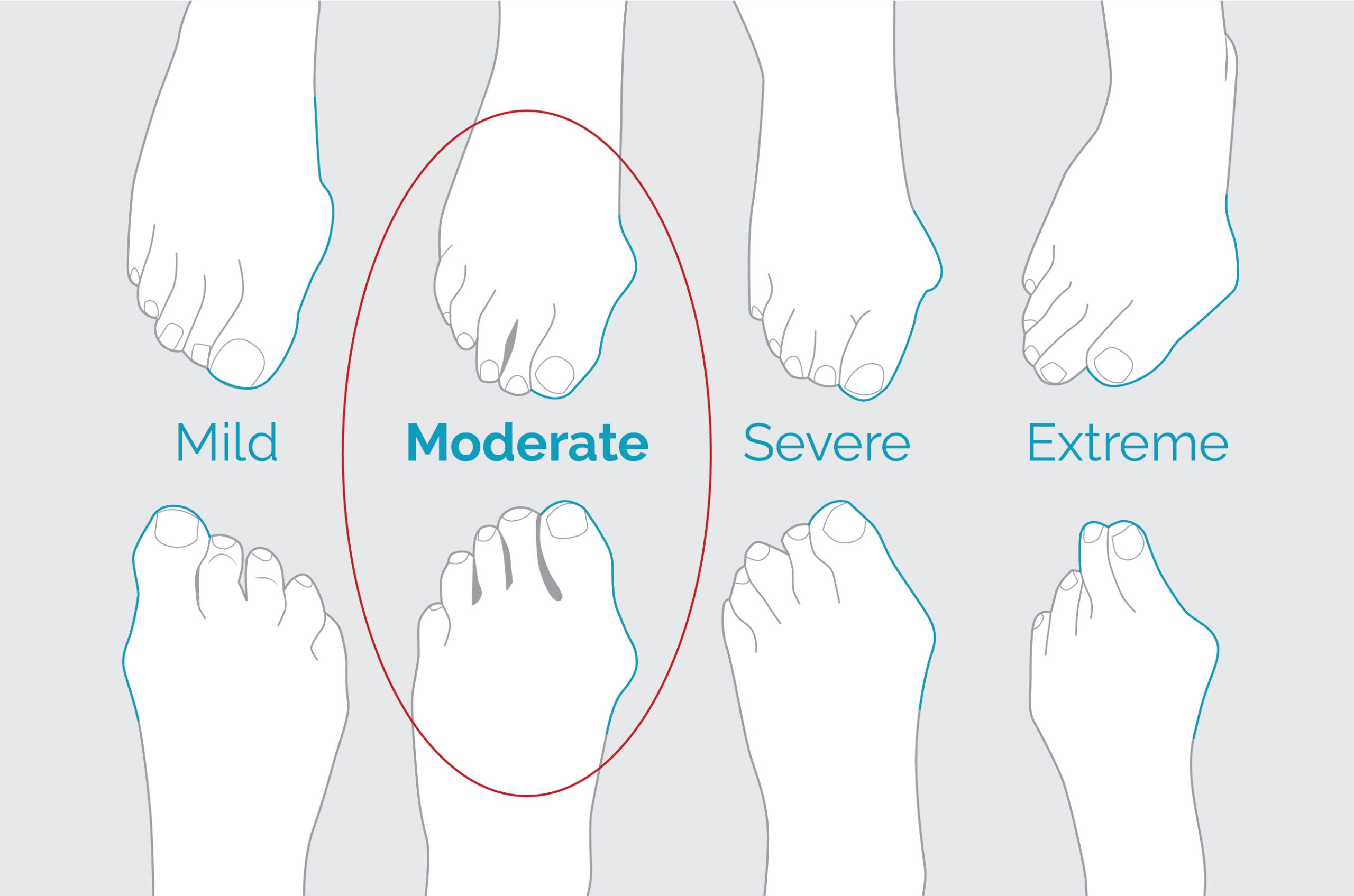
There are more than 100 different techniques to remove hallux valgus, therefore, the type of surgery depends on the individual case. The severity of the misalignment usually determines in what way the bunion will be removed.
Sarah’s deformity was small, so the surgery wasn’t complicated. Hallux valgus surgeries are performed under spinal anaesthesia and deep sedation, meaning that the patient is asleep during surgery.
First, the patient underwent osteotomy and osteosynthesis with a titanium screw to correct the I-metatarsal axis. The surgeon used surgical techniques that allow correct foot, restore normal foot function and prevent the recurrence of deformation.
Who can benefit from hallux valgus surgery?
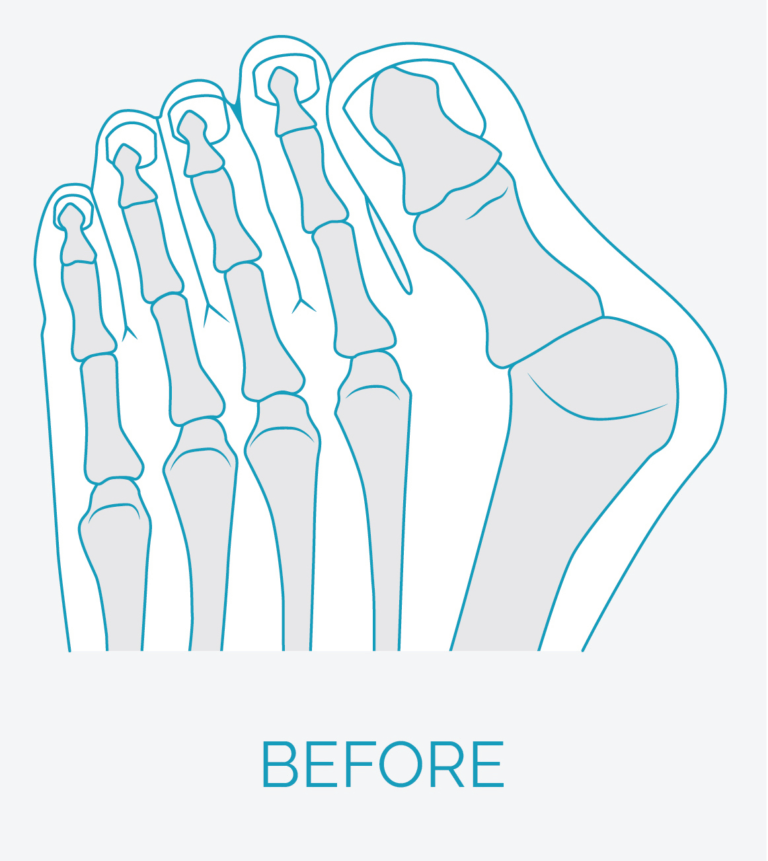
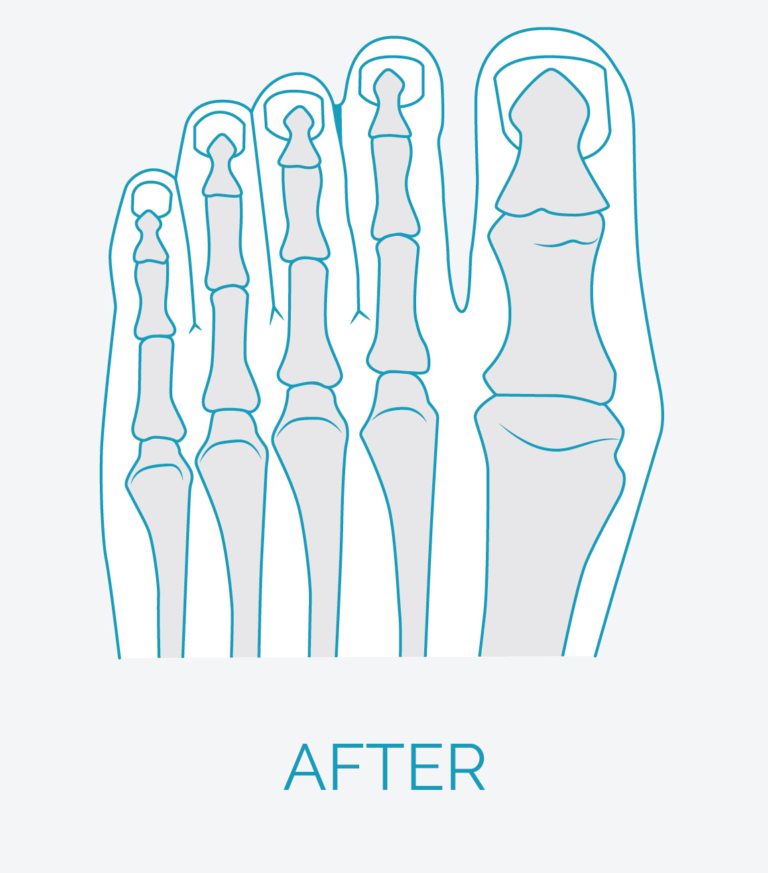
The first step is always to try a conservative treatment like toe splints, inserts between toes, shoe modifications or try to solve different foot deformities with shoe inserts, supinators for flatfoot, comfortable wider shoes. If the conservative treatment is not working, in the long run, the deformity of the first finger can change the position of the other fingers, and eventually, they have to be operated on too.
Hallux valgus surgery is recommended as soon as other methods are not working. As the degree of deformation increases, it is necessary to use a more complicated surgical technique which will result in longer patient recovery.
Usually, on the same day of the operation, patients can stand and walk on the heel of the operated foot.
